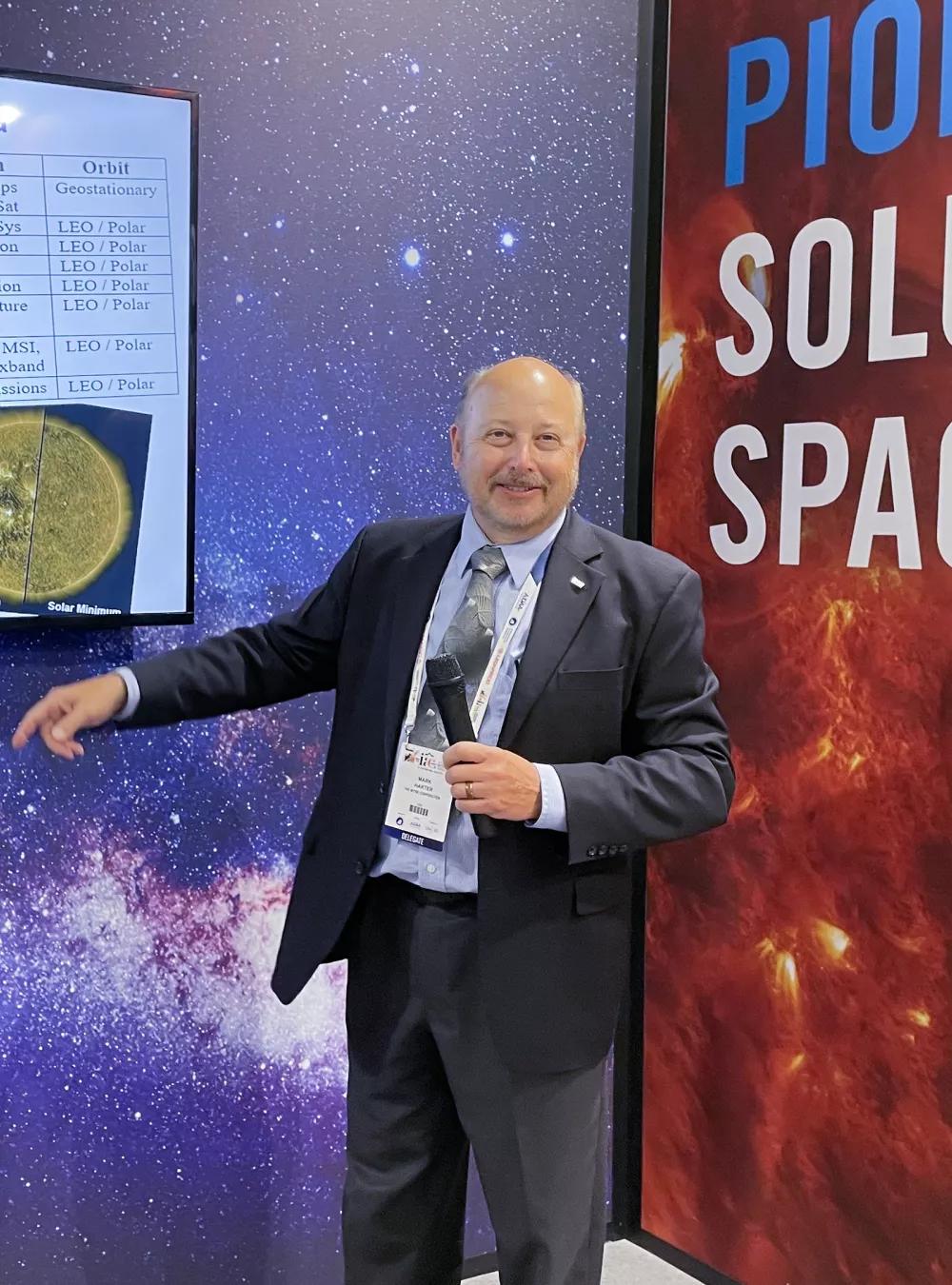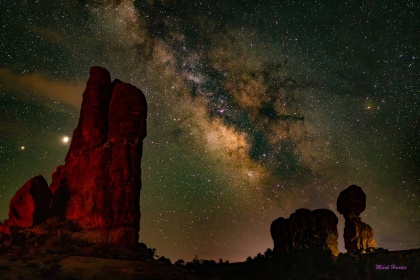As a MITRE space systems principal engineer, Mark Harter steers complex engineering initiatives that uphold our country’s space superiority. One of his roles is project leader for MITRE’s work with the Office of Space Commerce, helping to promote economic growth and technological advancement of the U.S. commercial space industry. Find out about Harter’s views on our space impact as well as the earthly delights of Colorado living.

For Space Systems Engineer, the Skies Are the Prize
According to aerospace engineer Mark Harter, this is the most exciting time for space since the Apollo Program in the 1960s.
“Twenty years ago, I would have said there’s no way any organization could launch 6,000 satellites in five years—well, SpaceX has done it,” Harter says. “And every day, people use space applications without even realizing it. Your car GPS, everyday financial transactions, the weather report—all that information comes from space-based services.”
Space commerce is a huge domain, impacting everything from agriculture to shipping to public safety and disaster relief. At MITRE, we’re at the forefront of space commerce and technology—leveraging and implementing research and development, then applying it to actual operations.
“It’s my great privilege to work on the cutting edge of MITRE’s space capabilities and operations,” Harter says.
Charting a Space Path
Harter’s fascination with space began in early childhood. For the lunar landing on July 20, 1969, he says his father brought the family outside and “we all looked up in awe at the moon.”
Six years later, the young space enthusiast viewed Apollo and Soyuz flying overhead in the same dark Wisconsin night sky. “Witnessing this historic event amid the Cold War convinced me that I wanted to work in the aerospace industry,” he says.
Upon retirement after 23 years as a U.S. Air Force Space Operations officer, Harter says MITRE was a natural fit for his next step.
“Because serving the public interest is MITRE’s priority, our space strategy and systems engineering efforts help the space community in every way—via national security, civil, commercial, and internationally,” he says. “In the last 18 years, MITRE has given me more opportunities than I could ever have imagined.”
Right in the thick of our nation’s space mecca, MITRE has the capability to respond to our sponsors and partners because they’re here, too.
Work That’s Down to Earth
MITRE’s work on space assets and services cuts across multiple disciplines, agencies, and federal departments. Mission areas include space domain awareness; satellite communications; missile warning and defense; Intelligence, Surveillance, and Reconnaissance; space electronic warfare; space commerce; and space traffic coordination.
As a result, space knowledge needs to be front-of-mind across multitudes of MITRE subject areas. Harter says one of his favorite aspects of his position is teaching the MITRE Institute’s Fundamentals of Space, a two-day class for employees whose work touches on space—as well as anyone on staff who just wants to learn more.
“Our space learning path helps our people understand the science, purpose, challenges, and importance of space to our nation’s most critical programs and missions,” Harter says.
This past October, MITRE’s space impact received international fanfare. Harter and his colleagues traveled to the International Astronautical Congress of 2024 in Milan, Italy, to present their paper about using space-based data for climate action to an audience of 11,000 scientists and engineers from all over the world.
“Our work focused on how we can use space data to provide environmental sustainability, help our environment, and solve countless other problems and challenges,” Harter says.
Rocky Mountain Highs
With around 300 employees, MITRE’s Colorado Springs, Colo., site is our largest outside the Bedford and McLean headquarters. In real-estate parlance, it’s all about location, location, location.
“We’re situated in the nation’s space mecca, with the U.S. Space Command, U.S. Space Force, Cheyenne Mountain Space Force Station, the Air Force Academy, Schriever Space Force Base, and lots of space industry leaders in our backyard,” he explains. “Right in the thick of it all, MITRE has the capability to respond to our sponsors and partners because they’re here, too.”
For Harter, Colorado offers even more.

“As a stargazer and astrophotographer, I can drive just an hour into the dark skies in the hills for beautiful views of the Milky Way, the planets, satellites, and, this year, the Northern Lights,” he says. “We have 15 DarkSky International locations just in Colorado that are certified as free from light pollution—a growing problem all over the world."
Colorado is rich with earthly phenomena as well. As a volunteer ranger and paleontologist at the Florissant Fossil Beds National Monument, Harter helps lead “stumps to stars” experiences that begin with petrified redwood stumps during the day, culminating with a return to the park at night for an astronomy lesson.
“What better example is there of the intersection of our past and our future?” he says.
Join our community of innovators, learners, knowledge-sharers, and risk takers. View our Job Openings and Student Programs. Subscribe to our MITRE 360 Newsletter.